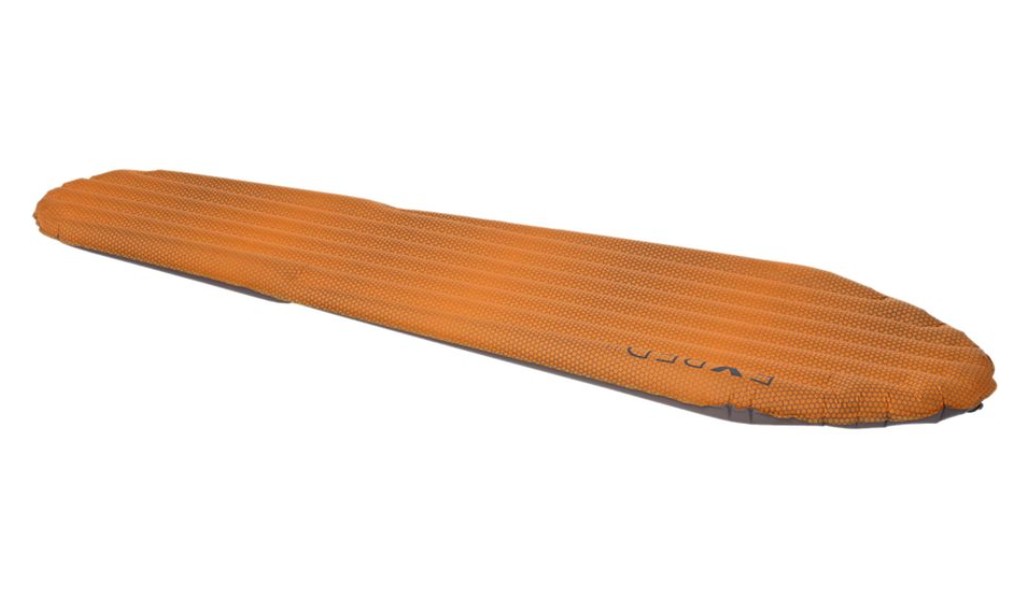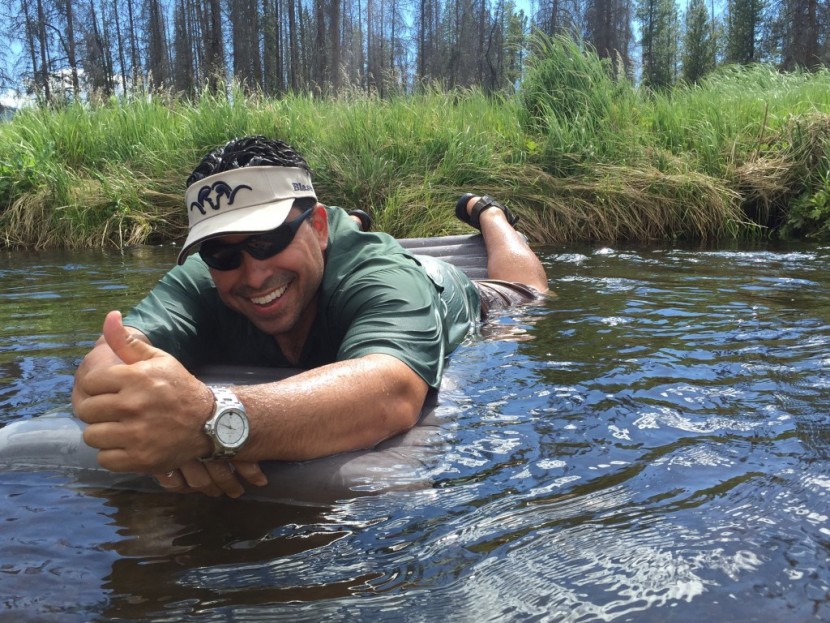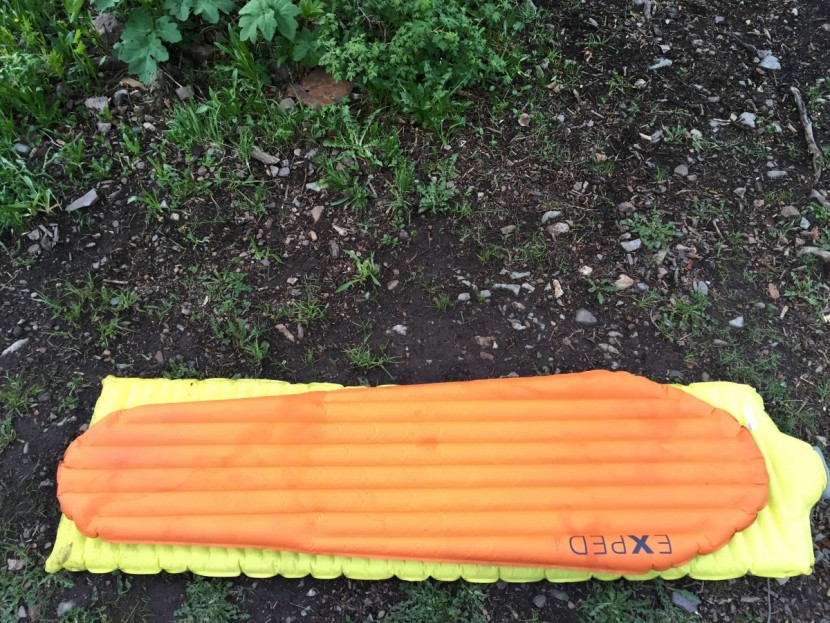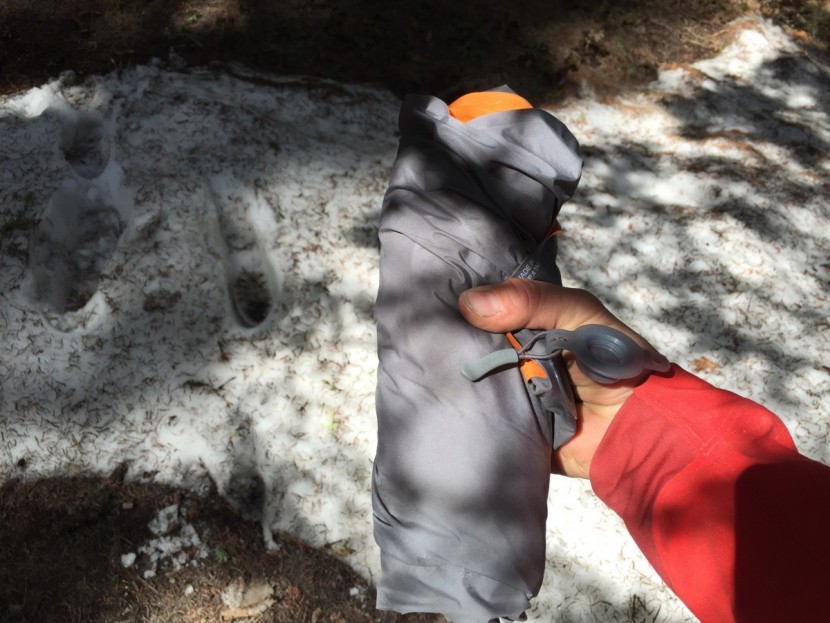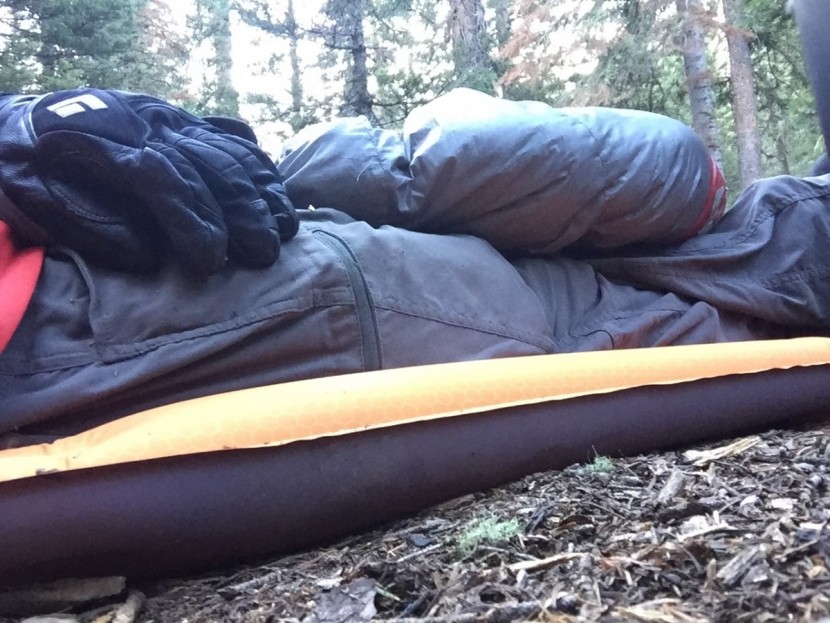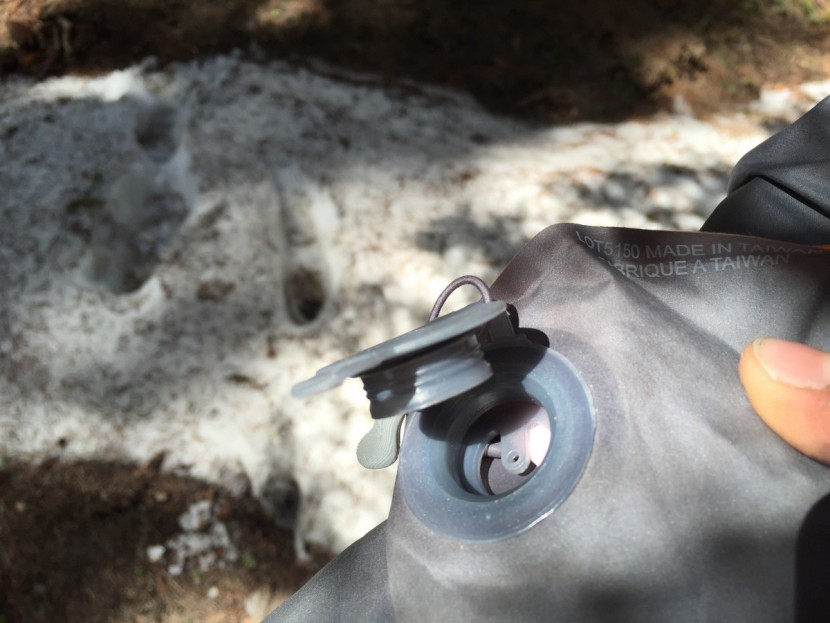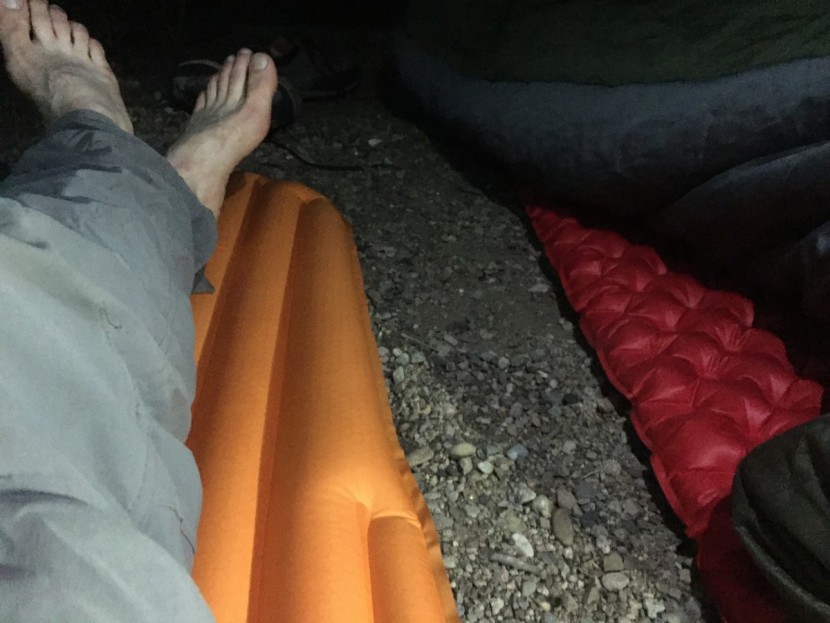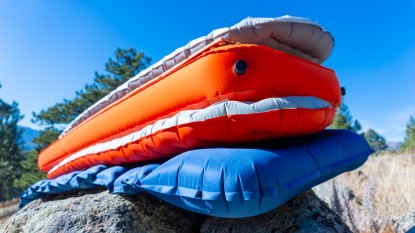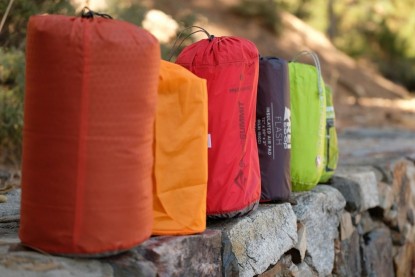Exped Synmat Hyperlite Review

Our Verdict
Our Analysis and Test Results
Hands-On Review
The Hyperlite is a performance-driven pad that climbed pretty high in the lineup. It is lightweight and warm enough for three seasons of use. We appreciate the tightly packed size and loved bringing it into the backcountry.
Comfort
Compared with foam or lightweight self-inflating pads, the Hyperlite shines as a comfortable alternative. Two-inch thick longitudinal baffles provide plenty of cushioning, support, and bumpy ground absorption. Like the REI AirRail 1.5, this Exped pad has slightly elevated side rails give just enough rise to help keep the mat under you, but not so much as to make it uncomfortable to sleep on your side like they do on the AirRail.
The tapering of the Hyperlite feels much more aggressive than other lightweight pads like the Sea to Summit Ultralight or Therm-a-Rest NeoAir XLite. The narrow foot-box and overall slender feel of the pad was the primary complaint among our testers. If you're craving a lightweight tent shelter, then this could be a great bonus for you! Lastly, we wish that the baffles gave a smoother surface like they do on the Exped SynMat 7. Nitpicking aside, the Hyperlite is sufficiently comfortable for the needs of ultralight hikers and is competitive with other lightweight sleeping pads.
Weight and Packed Size
Tipping the scale at 12.3 ounces, the Hyperlite lives up to its name. The only other pad we reviewed that packs as much warmth and comfort into a package this small is the Top Pick for Ultralight winning XTherm that is just a hair lighter and a little more comfortable. Beyond that, the two pads are fairly comparable and either is an excellent pick for folks looking to trim down their base weight for demanding objectives. However, for most people who aspire to the minimalist style, the Hyperlite is a superb choice with fairly limited pitfalls.
Warmth
Boasting an R-value of 3.3, the Hyperlite is warm enough for three season use and can be pushed into the snow if necessary. Synthetic insulation bonded to the top and bottom of the pad proved warm and effective when used for spring snow camping. As with any pad, you can easily put clothing or a foam pad underneath to boost your cumulative resistance to conductive heat loss.
Ease of Inflation
The Hyperlite's one-way inflation valve makes inflating the pad quick and easy. Deflating basically requires you to jam something in the one way valve to prop it open, and for this reason we greatly preferred the valves on the Sea to Summit Ultralight for their ability to deflate with ease.
Durability
The pad's 20 denier outer fabric is less substantial than the nylon used on other pads. Still, we used it throughout the summer directly on the ground and abused it greatly without any tears or pin holes. Should you run into trouble of this sort, they include a patch kit ready to mend the pad back to working order. Though we didn't have this issue, we found one review online where a dog's paws lacerated right through the pad's top fabric. As with most lightweight gear, reduced weight and packed size come at the expense of durability. You can always add a small piece of Tyvex or an emergency blanket for some increased puncture resistance.
Value
The medium size we tested retails for $179, making it $20 more than the XLite that we liked better overall. For this reason, we can't say that the Hyperlite is the best value. Buy it over the XLite if you can't stand the crinkle factor of the NeoAir pads and prefer longitudinal baffling.
Conclusion
The Hyperlite is a great pad for lightweight backpacking, throwing into your travel pack “just in case”, alpine climbing, and thru-hiking. It is competitively warm for the weight and is moderately comfortable. The narrow tapering at the foot reduce weight but make it less comfortable than other alternatives. While it isn't the best for casual camping, the Hyperlite is an excellent alternative to Therm-a-Rest's NeoAir series pads if you want comparable comfort, weight, and warmth.


